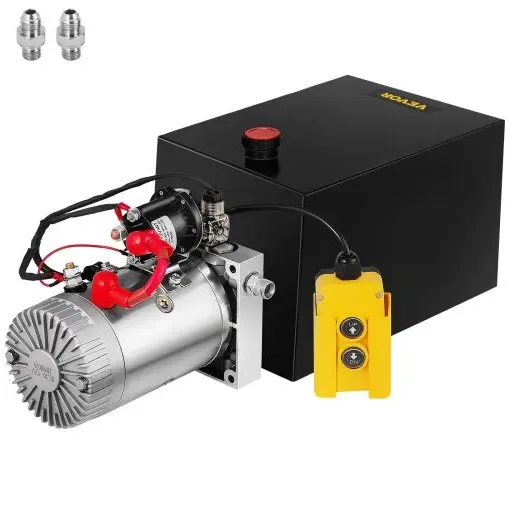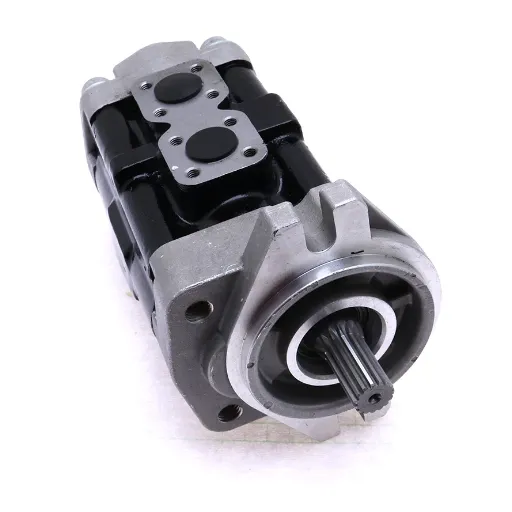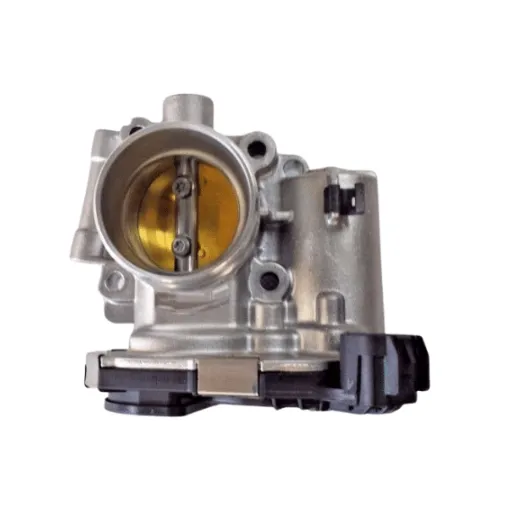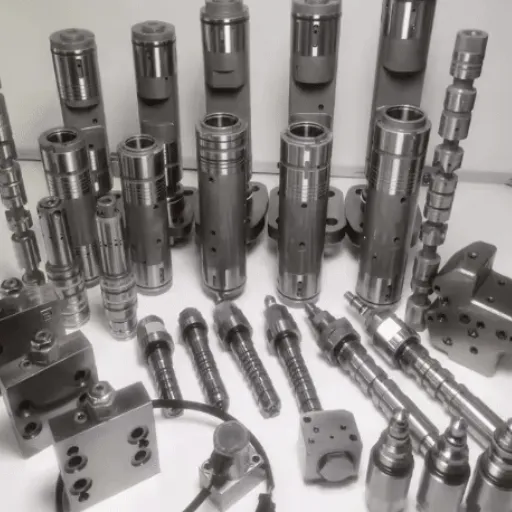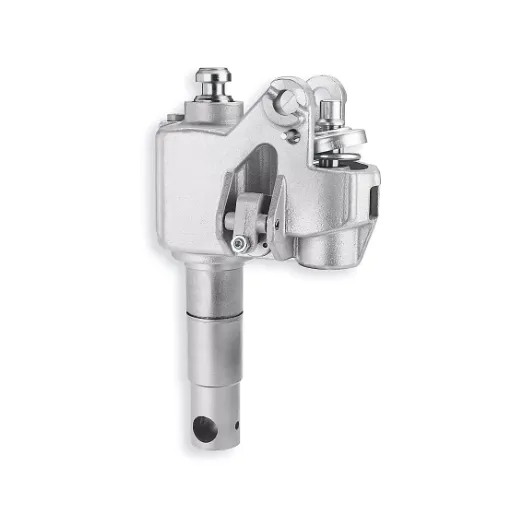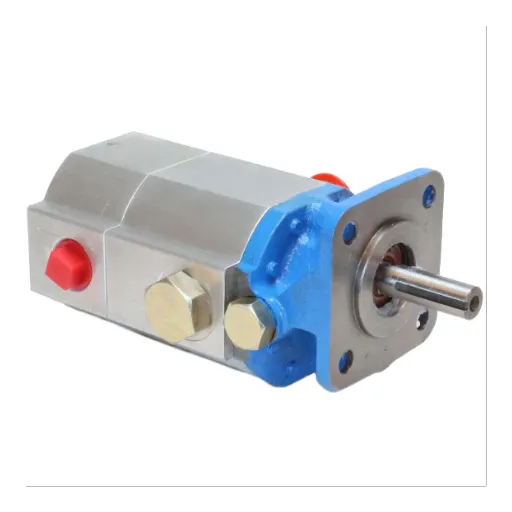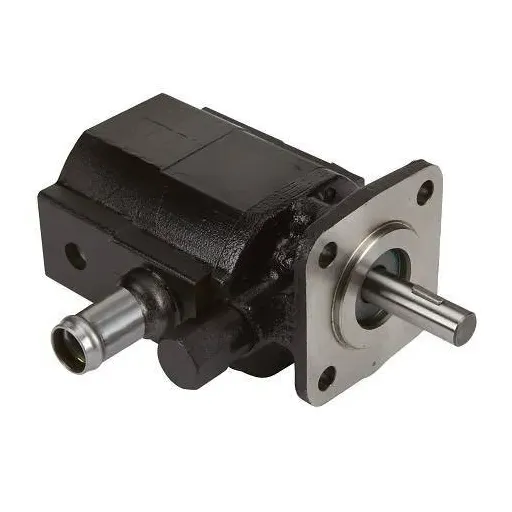This article explains the basics behind 12-volt hydraulic pumps and hydraulic power units so as to give an overview of their working, advantages, and proper application. This guide should become your deciding factor in considering how to best harness the flexibility of these systems to improve your equipment if you plan on enhancing your equipment, or if you are a beginner in the hydraulic technological arena.
Benefits of Using 12 Volt Hydraulic Pumps
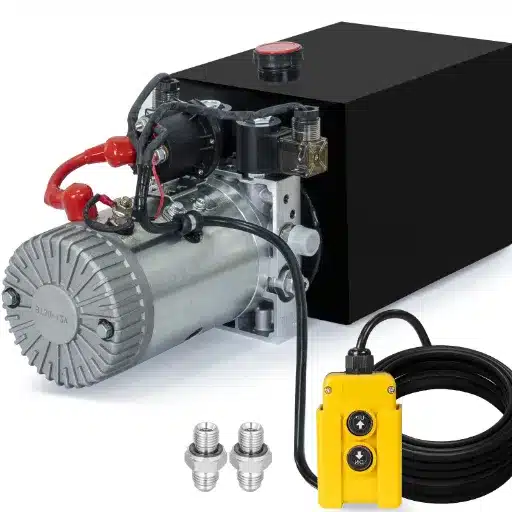
Efficiency and Versatility
12-volt hydraulic pumps are optimal for energy conservation and adaptability, offering a ready solution to a multitude of applications. The systems are designed to use small amounts of electrical energy and apply a constant hydraulic force, suitable for portable or remote equipment, as the main larger power supply may not be accessible. Less power consumption lowers operational costs yet still guarantees reliable performance.
Uses minimal electrical energy while providing consistent hydraulic force
Compatible with almost any hydraulic equipment across various industries
Small size allows fitting into tight spaces without compromising functionality
Versatility is yet one more advantage because these pumps can work with almost any hydraulic equipment. From operating lift gates and vehicle-mounted equipment to the application of agricultural implements, these 12-volt pumps are developed to give efficient services in a wide variety of environments. Their small size adds to their flexibility, permitting them to fit into tight spots without compromising on operational functionality.
Hydraulic pumps running on 12 volts usually fit the bill wherever applications are of an intermittent or short-duration nature. These are systems well capable of handling high-pressure outputs efficiently while maintaining thermal stability during operations. In this manner, efficiency and adaptability will work together by not only increasing the lifespan of hydraulic equipment that they are powering but also increasing productivity in general; hence, they serve an ideal application solution for many industries, including construction and agriculture, and more.
Cost-Effectiveness in Power Units
There are several factors making power units cost-efficient: among them are energy efficiency, upkeep, and investment cost. Hydraulic power units optimally harness energy by efficiently converting mechanical energy into hydraulic pressure with minimum wasting of energy, wherein overtime this energy efficiency translates into precious savings on operating costs, so that thereby costs in hydraulic systems become a major factor in industries sensitive to costs.
- Energy Efficiency: Optimal conversion of mechanical energy to hydraulic pressure with minimal waste
- Low Maintenance Costs: Durable and reliable systems require minimal upkeep compared to other mechanical systems
- Long-term Investment: Higher return on investment due to consistent operation under high-load applications
- Industry Benefits: Manufacturing, construction, and agriculture sectors benefit from cost and operational advantages
Portability and Ease of Use
Hydraulic systems are endowed with the reputation of being portable and easy to operate. As such, they stand on occasion in areas of service spread across various domains. Compared to other power systems that require elaborate installation or infrastructure, hydraulic equipment is designed to be adaptable to the environment.
Modern Features Enhancing User-Friendliness:
- Wireless controls for remote operation
- Diagnostic modules for system monitoring
- Ergonomic designs for improved accessibility
- Automated functionalities reduce manual operations
Applications of 12 Volt Hydraulic Pumps
Common Uses in Dump Trailers
In dump trailers, 12-volt hydraulic pumps are responsible for their operation, serving as a power source to lift and tilt the trailer bed. These systems are often used where loading, transport, and unloading are considered heavy-duty operations, such as gravel, soil, sand, and concrete debris.
Key advantages in dump trailer applications:
- High-pressure output despite compact and lightweight design
- Lifting capacity ranging from 3,000 to 10,000 pounds
- Remote control operation capabilities
- Manual override mechanisms for emergencies
- Variable flow rate settings for different requirements
Utilizing in Heavy-Duty Lifting Tasks
Hydraulic systems rated at 12 volts perform essential functions in heavy lifting, engaging in reliable manipulation of loads with precision and efficiency. Systems of this kind are by and large resorted to in cranes, forklifts, and vehicle lift platforms, wherein a modicum of controlled movement is required along with the capacity to bear weight loads.
System Components:
- Pump for generating hydraulic pressure
- Actuator for converting pressure to mechanical force
- Valve for controlling flow and pressure
- Reservoir for storing hydraulic fluid
Hydraulic Power in Agricultural Equipment
Modern agricultural tools heavily depend upon hydraulics for their efficiency and functionality; thus, these systems provide the desired power to work the plows, harvesters, balers, and sprayers with precision and lower manual tedium.
Recent technological advances in agricultural hydraulics include:
- Variable Displacement Pumps: Adjust flow rate based on instantaneous demand
- Electronically Controlled Systems: Enable automation features like automated depth control
- Section Control Technology: Optimize planting and spraying operations
- Energy Optimization: Reduce fuel consumption and minimize waste
Market Insight: The global agricultural hydraulic machines sector is expected to grow sustainably by 2030, driven by demand for precision farming and sustainable solutions.
Comparison with Other Types of Hydraulic Pumps
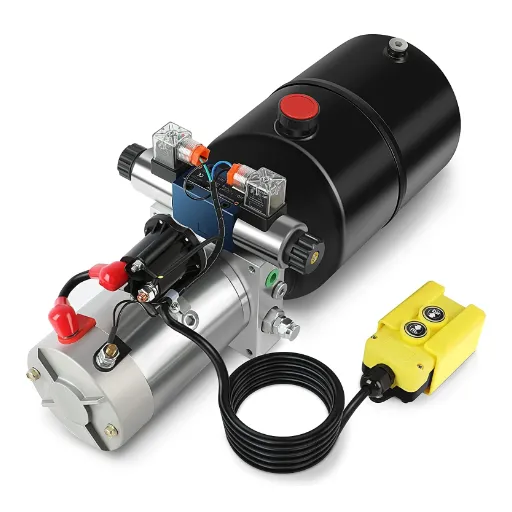
12 Volt vs. 24 Volt Hydraulic Pumps
12V pumps, smaller in size, are preferred for mobile applications and consume less power, while 24V units are efficient for industrial applications that generate less heat.
| Key Point | 12V Pump | 24V Pump |
|---|---|---|
| Voltage | 12V | 24V |
| Power Use | Lower | Higher |
| Efficiency | Moderate | High |
| Heat Output | Higher | Lower |
| Applications | Mobile/Automotive | Industrial/Stationary |
| Durability | Standard | Enhanced |
| Integration | Easy | Requires Planning |
| Cost | Affordable | Higher Initial Cost |
| Energy Use | More | Less |
| Suitability | Light-Duty | Heavy-Duty |
Double-Acting vs. Single-Acting Pumps
Single-acting pumps create hydraulic pressure in one direction, while double-acting pumps produce pressure in both directions and, hence, offer greater flexibility and efficiency.
| Key Point | Single-Acting | Double-Acting |
|---|---|---|
| Pressure | One Direction | Both Directions |
| Efficiency | Lower | Higher |
| Flexibility | Limited | Versatile |
| Cost | Lower | Higher |
| Design | Simple | Complex |
| Applications | Lifting, Pushing | Lifting, Lowering |
| Control | Minimal | Precise |
| Power | External Return | Hydraulic Return |
| Durability | Standard | Enhanced |
| Usage | Light-Duty | Heavy-Duty |
Choosing the Right Pump for Your Needs
In selecting the appropriate pump, one must perform an exhaustive analysis of operating requirements, including factors such as the type of application, pressure demands, and control requirements.
Single-acting pumps are preferred for simplicity and cost-effectiveness in lifting or pushing operations
Double-acting pumps for greater efficiency, versatility, and precise control in both directions
Key deciding factors include the level of control desired, the intensity of the work, and budget constraints. By carefully matching the type of pump with the application requirements, end-users can achieve the most efficient and cost-effective systems for their operations.
Installation Tips for 12 Volt Hydraulic Pumps
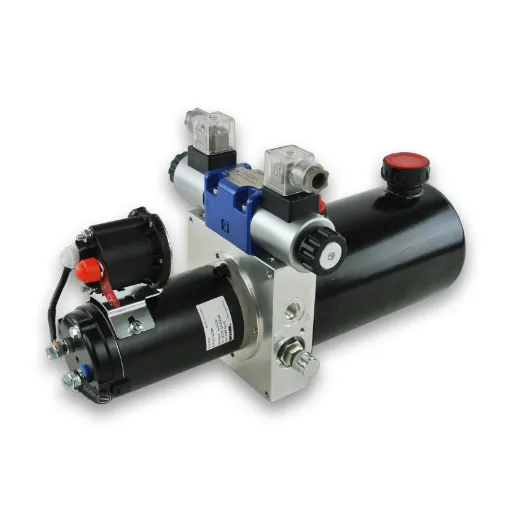
Step-by-Step Installation Guide
Step 1: Prepare the Required Tools and Materials
Ensure that the necessary tools are available: wrenches, mounting brackets, hydraulic hoses, fittings, and electrical wiring. Verify that the 12-volt hydraulic pump matches your system specifications, including voltage and pressure ratings.
Step 2: Choose an Appropriate Mounting Location
Select a stable and secure mounting location for the pump. Ensure easy maintenance access while protecting operations from environmental influences such as moisture, dust, or extreme vibrations.
Step 3: Install the Mounting Brackets
Mount the brackets to the surface using high-strength bolts and locking washers. Ensure brackets align with the pump mounting holes and are horizontal to avoid imbalance during operations.
Step 4: Connect the Hydraulic Hoses
Attach hydraulic hoses to the inlet and outlet ports on the pump. Ensure hoses match the required diameter for flow rate and pressure capacity. Apply thread sealant or Teflon tape to prevent leaks.
Step 5: Wire the Electrical System
Connect the pump to a 12-volt battery using appropriately gauged wires. Follow the manufacturer’s wiring diagram and install a fuse or circuit breaker of recommended amperage.
Step 6: Fill the Hydraulic Reservoir
Pour the correct type and amount of hydraulic fluid as specified by the manufacturer. Avoid underfilling or overfilling to prevent performance issues.
Step 7: Bleed the Hydraulic System
Remove trapped air by operating the pump on low cycle and opening bleed valves. Monitor fluid flow until steady flow indicates air removal.
Step 8: Test System Operation
Turn on the pump and observe operation. Listen for abnormal sounds, watch for leaks, and verify required pressure and flow rates are consistently achieved.
Step 9: Conduct Final Test
Verify all fittings are tight, mounting is secure, the pump functions properly, and safety features like pressure relief valves are working correctly.
Essential Tools and Equipment Required
For precise tightening of bolts and fittings to the manufacturer’s specified torque values
For crimping couplings on hydraulic hoses, ensuring proper fit and seal
For testing electrical circuits and verifying the correct voltage supply
For tightening or loosening hydraulic fittings and pipe connections
For monitoring system pressure during and after installation
For sealing hydraulic and pneumatic fittings to prevent leakage
Safety Precautions During Installation
Critical Safety Requirements:
- PPE: Always wear gloves, safety glasses, steel-toed footwear, and hearing protection
- Depressurize: Ensure the hydraulic system is fully depressurized before installation
- Lockout/Tagout (LOTO): Isolate all power sources to prevent accidental activation
- Proper Lifting: Use appropriate lifting equipment for heavy pump components
- Component Compatibility: Verify all components meet manufacturer specifications
- Environmental Considerations: Ensure installation location meets pump specifications
Maintenance of 12 Volt Hydraulic Pumps
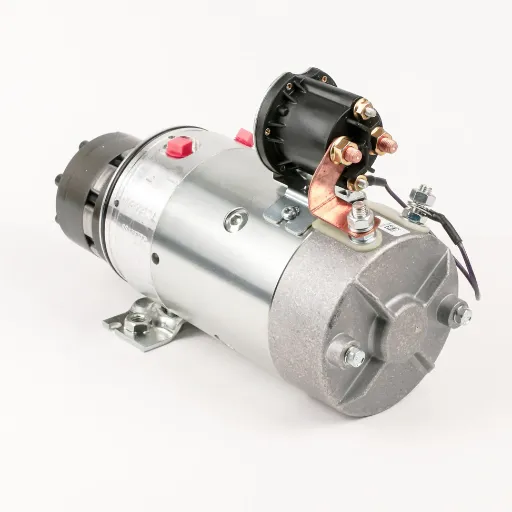
Routine Maintenance Practices
To get the best out of your 12-volt hydraulic pump and make it last longer, you have to maintain it regularly and properly. Regular inspection is key to identifying potential issues before they become major problems.
Regular Inspection Tasks:
- Check hoses, seals, and fittings for leaks or abrasions
- Examine electrical connections for corrosion or damage
- Monitor hydraulic fluid level and quality
- Inspect for signs of contamination or discoloration
- Test system pressure and flow rates
- Listen for unusual mechanical noises
Fluid Maintenance:
- Use manufacturer-recommended hydraulic fluid
- Replace contaminated or degraded fluid immediately
- Follow the manufacturer’s fluid replacement schedules
- Bleed system to eliminate trapped air
- Maintain proper fluid levels
Common Problems and Troubleshooting Tips
Cause: Internal wear, wrong fluid viscosity, or contamination in the hydraulic system
Solution: Inspect pump internals for wear, verify correct fluid viscosity, and perform fluid sampling for contaminants. Replace worn components and flush the system if contaminated.
Cause: Aeration (air entrainment), cavitation due to low inlet pressures, or component misalignment
Solution: Check fluid levels and the system for air leaks. Verify pump inlet pressure meets specifications. Check alignment of pump, motor, and system components.
Cause: Clogged filters, excessive load, or poor thermal dissipation
Solution: Evaluate system load against design capacity. Inspect and replace filters as necessary. Add heat exchangers or cooling mechanisms if needed.
Cause: Low fluid flow, restrictions, or damaged seals
Solution: Measure pump output flow rate. Check hydraulic lines, connections, and seals for leaks or damage. Ensure hydraulic fluid is clean and free of debris.
Cause: Excessive pressure, incorrect seal material, or faulty installation
Solution: Ensure system pressure is within design limits. Select appropriate seals for operating conditions. Follow proper installation procedures.
Cause: Air in the system or internal pump damage
Solution: Check the reservoir for low fluid levels, causing air intake. Inspect the pump casing for damage. Check for loose fittings or connections causing leaks.
Extending the Life of Your Hydraulic Power Unit
For maintaining the hydraulic unit’s longevity, consistent and comprehensive maintenance is essential, starting with regular inspection of vital components such as fittings, hoses, and seals.
Best Practices for Longevity:
- Regular Inspections: Spot issues early to prevent escalation
- Fluid Management: Keep hydraulic fluid clean and at appropriate levels
- Operating Conditions: Manage temperatures and pressures within design limits
- Quality Parts: Use OEM or equivalent quality replacement parts and fluids
- Maintenance Records: Keep detailed logs of maintenance and repairs
- Proper Storage: Safeguard the unit during idle periods
Frequently Asked Questions (FAQ)
Conclusion
12-volt hydraulic pumps represent a versatile and efficient solution for a wide range of applications, from dump trailers and agricultural equipment to marine systems and heavy-duty lifting tasks. Their compact design, energy efficiency, and reliable performance make them an excellent choice for both mobile and stationary applications.
By understanding the benefits, proper installation procedures, maintenance requirements, and troubleshooting techniques outlined in this guide, you can maximize the performance and lifespan of your hydraulic power systems. Whether you’re upgrading existing equipment or implementing new hydraulic solutions, 12-volt hydraulic pumps offer the flexibility and dependability needed for modern industrial applications.



